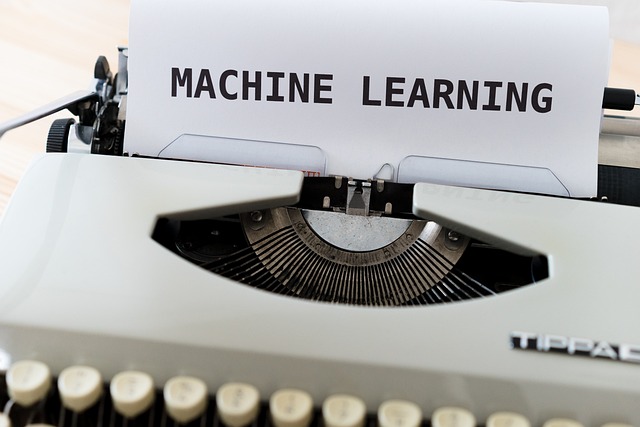We live in a world where our phones can understand us, apps can suggest what we want to watch, and websites know what we may like to buy. Ever wondered how that happens?
The answer is — Machine Learning.
Let’s understand this in a super easy way.
Understanding About Machine Learning?
Machine Learning is a kind of computer learning. Just like humans learn from experience, machines can also learn — by using data.
We give computers lots of data, and they find patterns in it. Once they learn from this data, they can make decisions, do tasks, and even predict future things — without us telling them what to do every time.
Also Read , About the Neural Networks in Machine Learning
Let’s Take a Simple Example
Think of a child.
You show them 100 pictures of apples and 100 pictures of bananas.
After some time, the child understands what an apple looks like and what a banana looks like.
Now, you show a new picture. The child can tell — “Hey! That’s a banana!” — even without anyone saying it.
Machine Learning works in a similar way.
We show the computer many examples. After learning from them, it can guess, understand, or decide about new things.

Types of Machine Learning
1. Supervised Learning
You teach the computer by giving questions with answers.
Example: 100 pictures of apples and bananas — and you also tell which one is which. The computer learns by looking at these.
It’s like teaching a student using answer sheets.
2. Unsupervised Learning
Now you give only data, no answers.
The computer groups similar things together by itself.
Example: You give pictures of apples, bananas, oranges — but don’t say what is what. The computer sees the similarities and puts similar ones in one group.
Like when we see unknown fruits and say, “These look the same.”
3. Reinforcement Learning
This is like reward and punishment.
You teach the machine like we teach a dog — give it a reward for the right action and nothing or a warning for the wrong one.
Example: A computer playing a game. If it wins, it gets a reward. If it loses, it tries a better move next time.
Where Do We See Machine Learning in Daily Life?
Let’s look at real-life applications of Machine Learning:
1. YouTube and Netflix Recommendations
You watch a few funny videos. Then YouTube starts showing you more funny videos.
This is machine learning at work. It learns what you like, and then suggests more.
2. Google Maps
Ever noticed how Google Maps tells you the fastest route or shows traffic?
That’s because it learns from millions of other users’ data and finds the best way.
3. Online Shopping
When you buy a T-shirt online, the website shows you matching jeans or shoes.
Machine Learning understands what people usually buy together and suggests things to you.
4. Face Recognition
Your phone unlocks by scanning your face? That’s machine learning too! It has learned how your face looks.
5. Chatbots or Virtual Assistants
Chat with Alexa, Siri, or any support chatbot? They learn how people ask questions and try to give the best answer.
These are just a few. There are many applications of machine learning in medicine, farming, banking, transport, education, and almost every field today!
Is Machine Learning Difficult?
For someone who wants to build machine learning systems — yes, it needs training and study.
But for users like you and me, it’s super helpful. We just use it without even knowing it’s machine learning.
Just like we don’t need to know how the internet works to use Instagram — same with machine learning.
Also Read, 10 IT Strategies for Scaling Startups

Can Small Businesses Use Machine Learning?
Yes! Earlier, only big tech companies used machine learning.
But now, even small businesses and startups can use it to:
- Understand customer behavior
- Send smart offers
- Improve service
- Get more sales
- Automate boring tasks
All this helps businesses save time and make better decisions.
Common Machine Learning Algorithms
Let’s take a quick look at the most used ML algorithms:
- Linear Regression: Predicts numbers, like the price of a house.
- Logistic Regression: Predicts categories, like yes/no answers.
- Decision Trees: Uses a tree-like structure to make decisions.
- Random Forest: A bunch of decision trees combined to improve predictions.
- K-means Clustering: Groups data into clusters.
- Neural Networks: Mimic the human brain to identify patterns.
Advantages of Machine Learning
- Learns from data automatically
- Improves over time with more data
- Can find patterns humans might miss
- Saves time and reduces human effort
Disadvantages of Machine Learning
- Needs a lot of high-quality data
- Can be biased if the data is biased
- Hard to understand how some models make decisions (black box problem)
- Mistakes can be costly in sensitive areas like healthcare or finance.
Real-World Uses of Machine Learning
ML is not just a buzzword. It’s everywhere around us:
- Generative AI: Tools like ChatGPT that write text, create images, or even generate videos.
- Speech Recognition: Siri, Alexa, and Google Assistant use ML to understand what you say.
- Customer Service: Chatbots help you find information or solve problems quickly.
- Computer Vision: Facebook tagging your friends in photos.
- Recommendation Engines: Netflix and Amazon suggest shows or products.
- Finance: Fraud detection and stock trading.
- Healthcare: Predicting diseases and analyzing medical scans.
Challenges in Machine Learning
Even though ML is powerful, it has its challenges:
1. Privacy and Data Security
ML models need data. But how do we make sure that personal data is not misused?
2. Bias and Fairness
If the training data is biased, the model will also be biased. This can lead to unfair decisions.
3. Job Impact
Some jobs may be replaced by automation. But new roles will also be created to manage and improve AI systems.
4. Accountability
If a model makes a mistake (like a self-driving car getting into an accident), who is responsible?
WebWorks Co. — Your Partner in Machine Learning and IT Solutions
At WebWorks Co., we make it easy for businesses to use technology.
Whether you run a small store or a big company — we can help you use machine learning, automation, websites, apps, and cloud services.
We understand that not everyone speaks tech — so we explain everything in your lingo that works for your goals.
From predicting what your customer wants, to automating replies on WhatsApp — we can help you grow using smart, easy-to-use IT tools.
Let’s Make Technology Simple Together
If you want to:
- Understand how machine learning can help you
- Build an app or website
- Automate your business tasks
- Get real results using AI
Then reach out to WebWorks Co. today.
We’ll listen, guide, and build the right solution for you.
Frequently Asked Questions
1. What is machine learning in simple words?
Machine learning is a way to teach computers how to learn from data and make decisions on their own, without being specifically programmed for each task. For example, it’s how Netflix suggests shows you might like based on what you’ve watched.
2. What are the 3 types of machine learning?
The three main types of machine learning are:
Supervised Learning: The computer learns from labeled data (like teaching a child with flashcards).
Unsupervised Learning: The computer finds patterns in unlabeled data (like grouping similar photos).
Reinforcement Learning: The computer learns by trial and error, getting rewards or penalties for actions (like how video game AIs improve over time).
3. How is machine learning used in real life?
Machine learning is used in many things we use every day — like:
Google Maps for predicting traffic
Spam filters in your email
Voice assistants like Siri or Alexa
Online shopping recommendations (like Amazon)
Even in medical diagnosis and self-driving cars!
4. What is the difference between AI and machine learning?
Artificial Intelligence (AI) is a broader concept that refers to machines being able to perform tasks in a smart way. Machine Learning (ML) is a part of AI — it focuses on machines learning from data without being explicitly told what to do. So, ML is one way to make AI smarter.





